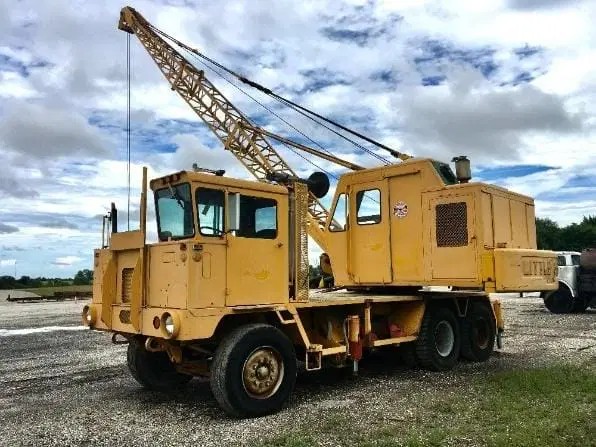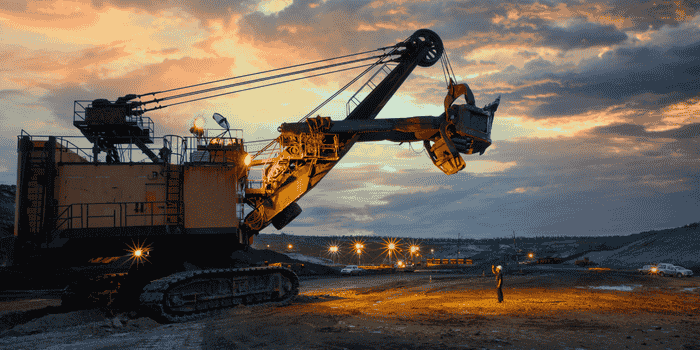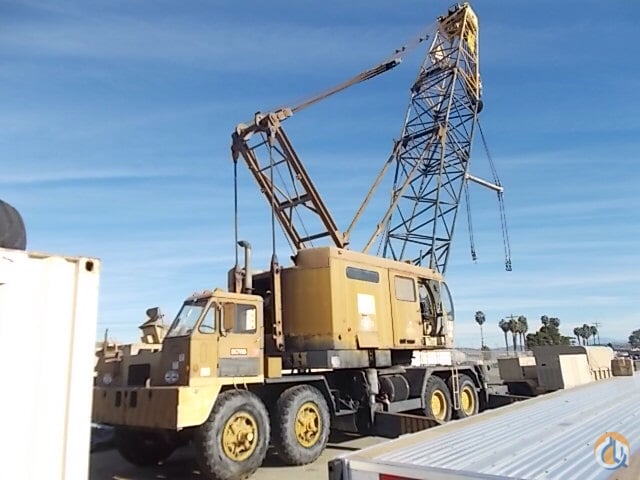For large-scale projects such as mining, dam building, or road construction, you need a machine that can handle heavy work easily. A dragline excavator is one of the most reliable equipment you can use.
But to operate it safely, you should know about its basics and dragline excavator types also. Our experts will tell you what a dragline excavator is and how you can choose the best one.
Dragline Excavator
A dragline excavator is a powerful machine. Basically, you can use it in mining and construction projects. This large-scale machine can move a huge amount of rocks, soil and other material from the surface of earth.

Dragline Components
Well, there are many different components that work together in a dragline excavator. You can see a bucket, boom, hoist rope, stick/drag rope, main machinery and counter weight in it.
Dragline Excavator Working
All parts of a dragline work continuously to dig and drop heavy weights. This process starts when your bucket is placed on the earth with the help of a boom. After that, a drag rope pulls the bucket to take material back.
Then a hoist rope lifts the bucket that is filled with heavy material. And carry it toward the point where you want to drop this load. When this bucket reaches the right place you can release it. This process is repeated again and again until that task is completed.
| Components | Functions |
| Boom | A long arm that extends from machine to bucket |
| Drag rope | A rope that is used to pull bucket backward from the ground |
| Bucket | A large metal scoop that is used to dig and collect material like soil and rock |
| Hoist Rope | A rope that lift and lowers bucket vertically |
| Control center | This portion contains motors, electrical systems and cabin |
| Counter weight | A heavy weight that is placed at the rear to balance boom and load of bucket |
| Base | If machine is movable then it supports machines to move on your site |
| Power system | You get electric energy from a main power system to operate machine |
Types of Draglines
Wheel-Mounted Dragline
As its name shows, this is a dragline that has wheels on its base. Basically, this is a good option for you if you are working on a hard and flat surface. For example; to build roads, to dig canals or to excavate near ports.
But always remember, you can not drive it in muddy or soft ground. Moreover, it does not have enough power to break hard rocks.

Crawler Dragline
Your crawler dragline also works like a traditional dragline. Actually, the difference is that it has metal tracks (as in tanks) for the movement. These tracks prevent machines from sinking in mud. Therefore, you can use it in muddy and soft ground.
But it is slower than a wheel-mounted dragline. But, you can use it for large-scale projects that require more power.

Truck-Mounted Dragline
Well, its difference is clear from its name, it is built or loaded on a truck. So, you can move it easily on roads. Basically, it is designed to handle short time projects or small construction sites.
Just like a wheel-mounted dragline, the truck-mounted dragline also needs hard and flat ground to move. As it is created on a truck so it has a smaller size of bucket and boom. Plus, it has less power to dig hard surfaces.

Dragline Excavator Walking
A walking excavator is among the world’s huge and powerful machines. So, you can’t move it with wheels and tracks. This is why special hydraulic feet are used to shift it. These feet look like large flat metal plates under machines.
Mostly, these machines are used in open-pit coal mining. Because they can remove top layers of soil and rocks easily. Moreover, a walking excavator has a very long boom that can dig a wide area from one place.
Dragline Excavator Uses
Mining And Resource Extraction
This is the most common usage of dragline excavators. There are many resources that are present only under earth. So, you can use a walking excavator to remove upper layers of soil and rocks to get them. For example; oil and coal.
Civil Engineering and Construction
You can use smaller dragline excavators for short term projects that need less power. For example; You can dig trenches on roads for water pipes and cable lines. Some draglines can have a special tool that allows them to push long metal or concrete rods into ground.
Repair and Restoration
You can often use them to fix and restore your mining sites when a project is completed. Draglines can also help to improve soil that is not useful like in flooded areas. In this scenario, you can move soil to make land reusable for agriculture and other projects.
Demolition
If you want to break down old buildings then you can use excavators for it. Because their long boom can tear down tall buildings. Additionally, you can lift heavy debris to clear ground easily after the demolition.
Advantages of Dragline Excavator
- A long boom of dragline can help you to reach deep into the ground.
- You can save your time because the big bucket lets you move a lot of material fastly.
- Draglines can throw the material directly at your destination place. So, you don’t need too many trucks to carry it away.
- You can work from the edges of a pit without going into wet or dangerous areas.
- You need less fuel, labor and equipment to handle any type of project.
- When you choose dragline you can save your environment. Because fewer machines produce less pollution, less noise and less damage to land.
- They are Ideal to dig in water areas without risk of sinking in it.
- They have a long boom, which means that you can cover a large area from one spot.
- These machines are hard and unbreakable so they can work for many years.
Limitations of Dragline Excavator
- Big walking draglines are very expensive for you to buy and build.
- Some draglines move very slowly even just a few meters per minute so you can face delays.
- You have to prepare your site like an arrangement of electricity which needs extra expense.
- Draglines work best with soft materials like soil or loose rock. Plus, they don’t dig as hard as hydraulic shovels can.
- Strong winds or bad weather can make it harder for you. Because, it is not easy to control a bucket in such weather.
- A bucket’s dragging motion can shake up a bigger area. Therefore, it can cause more erosion in sensitive places.
- Draglines don’t do well for you when you are on steep or uneven ground.
Commonly Asked Questions of Users
What is Dragline Bucket Capacity & Size?
Your buckets can range from under one cubic meter to over 100 cubic meters, which are used for mining.
Which is the World’s Largest Dragline Excavator?
The biggest dragline excavator is Big Muskie. Actually, it was a Bucyrus-Erie 4250-W model.
What is Dragline Excavator Price?
Dragline excavator prices range from few thousand dollars to over $200000+. Actually, it depends on size and their usage.
Final Thoughts
Dragline excavators are powerful machines designed for heavy earthmoving tasks. Not just limited to that, they are built to last and can work for many years at your work site. For any questions about dragline excavators or construction products, you can talk to our team.
More Relevant Sources
Bulldozer vs Excavator: Types, Uses and 12 Differences


-80x69.png)

